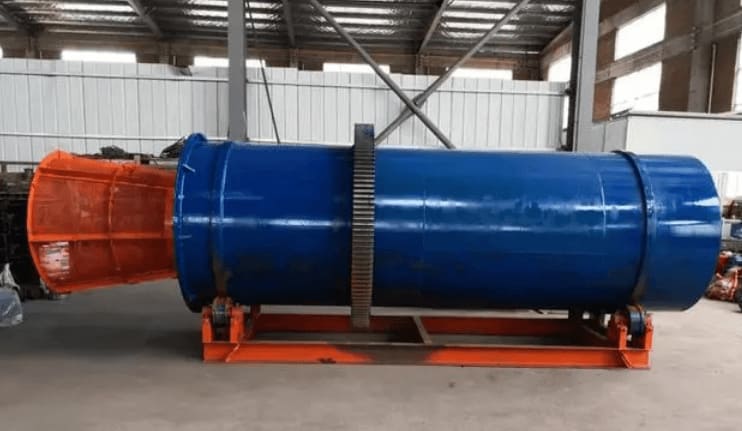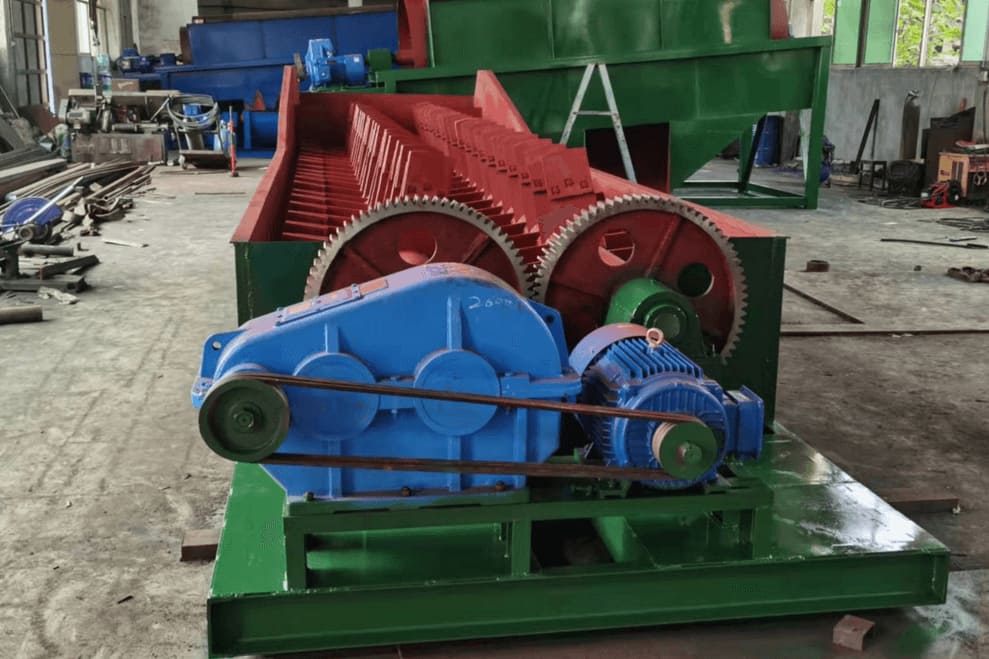Tantalum and niobium are high-solubility non-ferrous metals with several high-quality characteristics that make them key raw materials for industrialization. Tantalum and niobium have high melting points (2996℃ for tantalum and 2468℃ for niobium), good ductility, low vapor pressure, high corrosion resistance, and high heat transfer rate. Tantalum niobium is a key raw material for the production of electronic devices, atomic energy, cosmic navigation, steel, chemical plants, and other industries.
Tantalum-niobium ore is a very rare natural resource, its water content in iron ore is very low, tantalum-niobium ore can not be used immediately for industrial production of raw ore, and must be carried out in smelters to purify, improve the taste of tantalum-niobium can be marketed, how to improve the taste of tantalum-niobium ore? How to improve the taste of tantalum-niobium ore? It is necessary to use tantalum-niobium ore dressing technology and tantalum-niobium mining machinery and equipment.
China’s tantalum-niobium ore resources in the ore type and metallogenic characteristics of the more complex mainly manifested in the complexity of the symbiosis of minerals, chemical composition of a variety of deposit types, and other characteristics. These characteristics make tantalum-niobium mining and extraction technology requirements high but also affect the development and utilization of resources. So what are the characteristics of tantalum niobium ore in Africa?
Africa Tantalum Niobium Ore
1. Single ore type
Tantalum-niobium ores in Africa are dominated by alluvial ores, which are mainly formed by rivers or weathering. The tantalum and niobium minerals in the alluvial ores are mainly tantalite and columbite, and the proportion of tantalum and niobium in the ores is relatively stable. As the composition of alluvial ores is relatively homogeneous, their beneficiation and processing are simple, and the tantalite and niobium minerals can be separated more directly without the need to deal with too many co-occurring minerals, which greatly simplifies the production process.
2. Simple mining methods
The loose structure of alluvial mines makes them relatively easy to mine, and tantalum-niobium minerals can usually be extracted by simple hydraulic mining or gravity separation. This is a relatively low-cost mining method that does not require complex underground mining and blasting, and most tantalum-niobium ores can be washed directly to obtain enriched products. In addition, as the alluvial mines are distributed in river beds, valleys, and other surfaces, the mining equipment and technology requirements are low, which is in line with the current situation of weak mining infrastructure in some parts of Africa.
3. High resource grade
Tantalum and niobium alluvial mines in Africa generally have high tantalum and niobium grades, and the ores are widely distributed. In many mining areas in East and Central Africa, the concentration of tantalum and niobium minerals is large, and the tantalum content of the ores is high, which makes African alluvial mines more competitive in the international market. Due to the high grade and single composition, beneficiation costs are lower and the output of tantalum-niobium products is more in line with industrial demand.
4. Relatively simple processing technology
Tantalum-niobium minerals in alluvial ores can be separated more efficiently during gravity beneficiation without the need for complicated chemical purification processes. Due to the single composition of the ore, the beneficiation plant can use gravity beneficiation and a simple mechanical separation process, which can extract tantalum-niobium concentrate in a relatively short time and improve production efficiency. This makes African alluvial ores less difficult to beneficiate and extract compared to complex primary ores and can reduce production costs.
5. Relatively low environmental impact
The simplistic nature of alluvial mining helps to reduce environmental damage. The mining of tantalum and niobium alluvial ores does not require large quantities of chemical reagents or complex smelting processes, which reduces the likelihood of hazardous wastewater and waste residues being generated at the mine site. Although illegal and uncontrolled mining may still lead to soil erosion and river blockage, the environmental impact of alluvial mining is relatively small compared to the mining and chemical treatment of primary ores, making it suitable for promoting environmentally friendly mining methods in areas with high resource development potential.
6. Economic value and market demand
African alluvial mines are favored by the international market for their simple and economical mining and beneficiation methods, especially against the backdrop of growing demand for tantalum and niobium, and many countries and companies have chosen to source alluvial mines in Africa. African countries also profit from the export of tantalum and niobium ores, boosting local economies. Therefore, the singular characteristics and economics of African alluvial ores make them competitive in the international tantalum-niobium ore market in the long term.
In summary, African tantalum-niobium mines are dominated by alluvial mines, with relatively homogeneous ore types and compositions, which brings low-cost and simple mining and processing methods. This characteristic brings opportunities for the mining development of African countries, enabling their tantalum-niobium ore resources to enter the international market quickly, and also creates conditions for environmental management and sustainable development of resources in mining areas.
Tantalum-niobium Ore Beneficiation
Gravity Separation
Tantalum-niobium primary ores are mostly processed by grinding and re-election. Generally in the grinding control circuit with separation machinery and equipment, in order to advance the acquisition of individual minerals. Tantalum-niobium alluvial ores because the minerals are better dissociated individually, usually without crushing and grinding, when the election of the first brushing, to remove the masonry and cobbles, and then carry out roughing, coarse crystalline tantalum-niobium ore selection of jig rougher, rougher concentrates selection of shaking table extraction; fine crystalline tantalum-niobium ore selection of jig or shaking table rougher, rougher concentrates selection of shaking table extraction again. This step is characterized by small investment, good effect, low cost, and less air pollution.

Magnetic/Electric Separation
Tantalum-niobium ore extraction must be comprehensively applied to strong magnetic separation equipment, electrowinning and other smelting plant methods, which can deepen the purification of jig concentrates to exceed the industrial production requirements. Tantalum-niobium ore smelting plant is the key in the roughing step, due to the extremely low taste of the raw ore, it is imperative to use high-efficiency, environmentally friendly, energy-saving, low-consumption mining machinery and equipment to carry out pre-election of the tailing, reduce the working pressure of the extraction machinery and equipment, and only in this way can we get a good economic return, if you choose to use the extraction machinery and equipment to carry out the smelting of tantalum-niobium ore after the washing of the smelting plant, whether it is high-efficiency or energy consumption can not be achieved ideal provisions. The following are some of the reasons for this.
Flotation
Tantalum-niobium slime can be sorted by a flotation process. Before flotation, a large part of it is deslimed in a small diameter cyclone or filtration smelter, and then flotation is carried out with alkylsulfosuccinate as a trap, sodium silicate and hydrochloric acid as a regulator, under the standard of PH2-3, and the flotation concentrate is extracted with a Holman sludge shaker – transverse drive belt hopper, or butadiene phosphonic acid is used as a trap, and sodium fluorosilicate, Or use butadiene phosphonic acid as trapping agent, sodium fluosilicate, salt as the regulator, carry out flotation under the standard of PH6, and the flotation concentrate is extracted by swinging drive belt coal hopper or countercurrent drive belt coal hopper. In this way, tantalite or niobium-copper concentrates are obtained. This step is characterized by high separation index values, but the tantalum-niobium water content in the removed sludge is close to the original ore taste, the use of large quantities of drugs, and high product costs.


Tantalum-niobium ores in Africa are mostly alluvial ores, with simple iron ore characteristics, monotonous composition, extensive mud content, and strong soil viscosity. To purify tantalum-niobium ores from smelters in Africa, the first step is to wash and desliming the ores, and the first step is to drain out the soil’s obstruction to tantalum-niobium smelting plants. Wash the tantalum niobium ores with the trommel scrubber and log washer. First, the trommel scrubber washes the raw ore, breaks up the lumps of mud, and screens out the lumps of gravel. The mud and sand enter the log washer for further cleaning and desludging and then enter the smelting plant process. JXSC is a professional manufacturer of mineral processing equipment in China, which can help large, medium, and small-sized mines to design the beneficiation process and improve the sorting effect.
